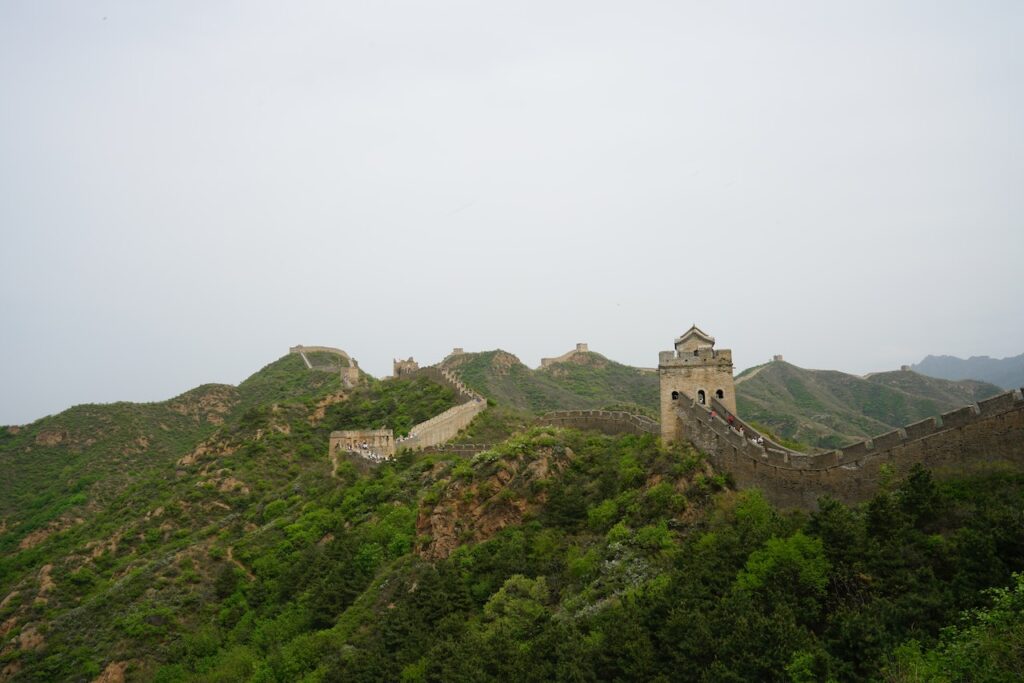The Great Wall of China, a marvel of human engineering and determination, is often shrouded in myths and legends. One of the most enduring misconceptions about this ancient wonder is the belief that it is visible from space with the naked eye. In reality, this notion is far from the truth, and the myth of the Great Wall’s visibility from space warrants a closer examination.
The Great Wall of China stretches over 13,000 miles, winding through diverse landscapes of deserts, mountains, and grasslands. Constructed over centuries to protect against invasions from the north, it is indeed a monumental achievement. However, its width and construction materials are key factors that make it virtually impossible to see from space without aid.
From low Earth orbit, where astronauts aboard the International Space Station (ISS) and other space missions operate, the Great Wall is nothing more than a thin, winding line. The wall’s average width is approximately 20 feet, and it is constructed mainly from materials native to its region, such as earth, stone, and wood. These materials blend seamlessly with the natural terrain, making the wall blend in with its surroundings when viewed from space.

The myth of the Great Wall’s visibility from space likely stems from a misunderstanding of the term “space.” While it’s true that astronauts in the ISS are technically in space, they are in a low Earth orbit, which is relatively close to our planet. The concept of “space” in popular culture often conjures images of vast distances, but in reality, the ISS orbits at an altitude of roughly 250 miles. At this proximity, even large structures on Earth appear small and indistinct.
In 2003, NASA astronaut Dr. Ed Lu, who spent six months aboard the ISS, emphasized the myth’s inaccuracy. He stated that the Great Wall of China is, in fact, very difficult to spot from the ISS without binoculars or a camera with a zoom lens. Astronauts aboard the space station typically rely on specialized equipment to capture detailed images of specific locations on Earth.
The myth may also have been perpetuated by photographs taken from spacecraft or lunar missions. These images often use high-powered cameras and lenses to capture details on Earth’s surface that are not visible to the naked eye from space. Such photographs can create the illusion of the Great Wall being easily discernible from afar, but this is a result of advanced photographic technology rather than a direct observation.
Another reason for the myth’s persistence is the immense popularity and fascination surrounding the Great Wall. It has been a symbol of Chinese culture and resilience for centuries, drawing millions of visitors and researchers from around the world. The idea that this iconic structure is visible from space adds an element of mystique and grandeur, further elevating its status.

It is essential to dispel this myth not only for the sake of accuracy but also to appreciate the true wonders of the Great Wall of China. Its historical significance, architectural ingenuity, and the sheer determination required for its construction are awe-inspiring in their own right, without the need for embellishments. The Great Wall stands as a testament to human achievement and the enduring legacy of those who built it.
In conclusion, the belief that the Great Wall of China is visible from space without aid is a myth that has persisted for decades. While the Great Wall is an extraordinary human accomplishment, its narrow width and construction materials make it nearly impossible to see from low Earth orbit without the assistance of specialized equipment. Understanding the truth behind this myth allows us to appreciate the Great Wall for what it truly is—a remarkable testament to human history and resilience.


